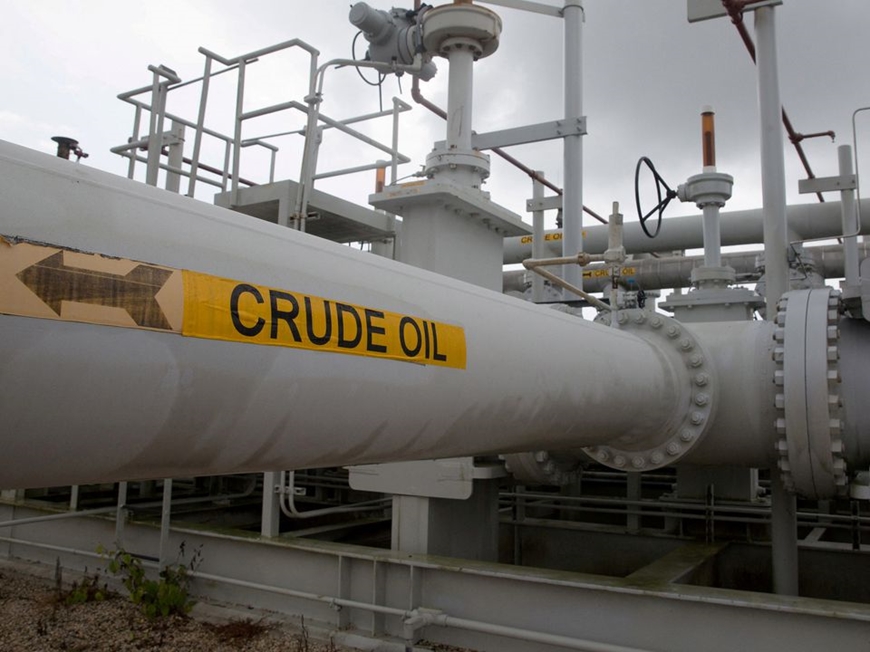Oil prices were almost flat as the market weighed supply and the possibility of interest rate hikes. Brent crude fell slightly by 13 cents, WTI rose by 1 cent.
World oil prices
At the end of the trading session on July 6, oil prices were almost flat as the market considered tighter US crude oil supplies and the possibility of higher US interest rates that could reduce energy demand.
 |
| Gasoline prices remained almost flat during the trading session on July 6. Illustration photo: Reuters |
Brent crude futures fell 13 cents, or 0.17%, to $76.52 a barrel. Brent had gained just 0.5% in the previous session. Meanwhile, U.S. West Texas Intermediate (WTI) crude edged up just 1 cent to $71.80 a barrel after rising 2.9% in the previous session to match Brent’s gains from earlier in the week.
According to Reuters , the market is expecting interest rates in the US and Europe to continue to rise to curb inflation. Concerns about a global economic recession have increased after recent surveys showed slowing service and factory activity in China and Europe.
According to the minutes of the US Federal Reserve (Fed) meeting on June 13 and 14 released on July 5, the US Central Bank agreed to keep interest rates unchanged in June to have time to assess the impact of the previous 10 interest rate hikes.
US interest rate futures on July 6 showed that the probability of another US interest rate hike (expected in November) increased after news of a strong increase in private payrolls last month, proving that the labor market remains tight and strong.
Fed Funds futures are pricing in a 48% chance of a November rate hike, up from about 36% the day before, according to CME Group’s FedWatch tool. For next month’s Fed policy meeting, the odds of a 25 basis point hike are at 95%, up from 90.5% late on July 5.
Phil Flynn, an analyst at Price Futures Group, commented that the Fed wants to see the labor market cool. Meanwhile, the market is worried that the Fed will have to take its “punch” away.
Supporting prices was data from the US Energy Information Administration (EIA) showing that US crude oil inventories fell more than expected last week. Specifically, crude oil inventories fell by 1.5 million barrels last week to 452.2 million barrels, compared with analysts' expectations in a Reuters poll for a decrease of 1 million barrels. However, the decrease was smaller than data from the American Petroleum Institute (API) that US oil inventories fell by about 4.4 million barrels.
Also according to EIA, US gasoline and distillate inventories also decreased by 2.5 million barrels and 1 million barrels, respectively.
“While inventories are supporting oil prices right now, the oil market is being driven by concerns about further interest rate hikes,” said Andrew Lipow, president of Lipow Oil Associates in Houston. “This comes at a time when OPEC+, particularly Saudi Arabia and Russia, are reiterating their commitment to limiting production and exports,” Lipow said.
 |
| A decrease in US gasoline and oil reserves may push up gasoline prices today (July 7). Illustration photo: Reuters |
The group is likely to maintain its bullish view on oil demand growth next year when it releases its first outlook for 2024 this month, predicting a slowdown from this year but still an above-average increase, sources close to OPEC said.
OPEC ministers and oil executives told a two-day conference in Vienna, Austria, that governments need to shift their focus from supply to demand. Instead of pressuring oil producers to limit supply, which global energy chiefs say will only raise prices, governments should shift their focus to curbing oil demand to reduce emissions.
Domestic gasoline prices
Domestic retail prices of gasoline on July 7 are as follows:
E5 RON 92 gasoline is not more than 20,470 VND/liter. RON 95 gasoline is not more than 21,428 VND/liter. Diesel oil not more than 18,169 VND/liter. Kerosene not more than 17,926 VND/liter. Fuel oil not exceeding 14,623 VND/kg. |
MAI HUONG
Source






























![[Photo] National Assembly Chairman attends the seminar "Building and operating an international financial center and recommendations for Vietnam"](https://vphoto.vietnam.vn/thumb/1200x675/vietnam/resource/IMAGE/2025/7/28/76393436936e457db31ec84433289f72)






































































Comment (0)